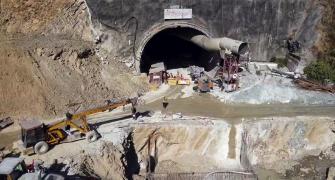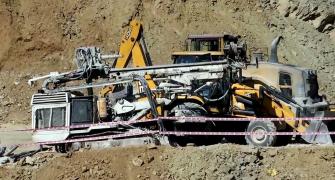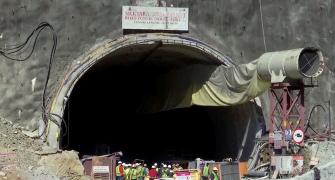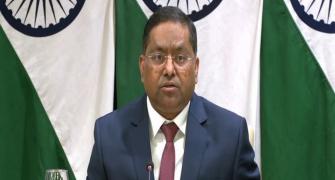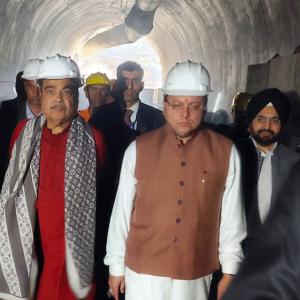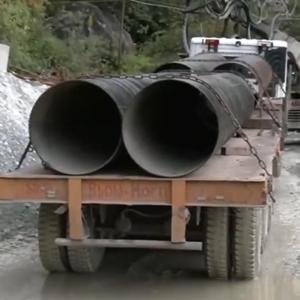It has been a week since 41 labourers got trapped inside an under-construction tunnel at Silkyara in Uttarakhand's Uttarkashi district after parts of the structure collapsed following a landslide last Sunday.

Following is the timeline of the disaster and the rescue efforts that followed:
November 12: The labourers get trapped as portions of the Silkyara-Dandalgaon under-construction tunnel on the Brahmkhal-Yamunotri highway collapse following a landslide at around 5.30 am on the day of Diwali.
Rescue efforts are launched by the district administration and arrangements made to supply oxygen, electricity and eatables to the trapped labourers through air-compressed pipes.
Multiple agencies, including the National Disaster Response Force (NDRF), State Disaster Response Force (SDRF), Border Roads Organisation (BRO), project executing agency National Highways and Infrastructure Development Corporation Limited (NHIDCL) and Indo-Tibetan Border Police (ITBP), join the rescue efforts.
November 13: Contact is established with the trapped workers through a pipe meant to supply oxygen to them and they are reported to be safe. Rescue efforts continue as Chief Minister Pushkar Singh Dhami visits the site.
Not much progress is made in removing the debris accumulated on the collapsed part of the tunnel as fresh rubble keeps falling from above, further complicating the task of the rescuers.
As a result, the debris accumulated in an area of around 30 metres spreads to 60 metres.
A strategy is devised to stabilise the loose soil inside the tunnel applying the method of shotcreting (spraying concrete) and then insert large-diameter steel pipes through the rubble to prepare an escape passage for those trapped.
November 14: Steel pipes of a diameter of 800 and 900 mm are brought to the tunnel site to be inserted through the rubble with the help of an auger machine for horizontal digging.
However, the efforts suffer a setback when more rubble falls from the cavity created by the cave-in and causes minor injuries to two labourers.
Meanwhile, a team of experts begins a survey of the tunnel and surrounding areas for soil testing.
The trapped workers are supplied food, water, oxygen, electricity and medicines as some of them complain of nausea and headache.
November 15: Dissatisfied with the performance of the first drilling machine, the NHIDCL asks for a state-of-the-art American auger machine, which is airlifted from Delhi to speed up the rescue efforts.
November 16: The high-performance drilling machine is assembled and installed. It starts working past midnight.
November 17: Working overnight, the machine drills about 24 metres through the rubble by the afternoon and four MS pipes with a length of six metres each are inserted. The process comes to a halt when the fifth pipe hits an obstacle. Damage to the machine is also reported.
Yet another high-performance auger machine is flown down from Indore to assist in the rescue efforts following a request from the NHIDCL.
In the evening, the NHIDCL reports that around 2:45 pm on Friday, during the positioning of the fifth pipe, a big cracking sound was heard in the tunnel and the rescue operation suspended immediately.
The sound creates panic among the rescue team members. An expert involved in the project warns about the possibility of further collapse in the vicinity. Subsequently, the drilling and pipe-pushing activity is stopped.
November 18: Drilling does not resume on Saturday as experts feel that the vibrations created by the diesel-driven 1,750-horse power heavy-duty American auger inside the tunnel might cause more debris to collapse, posing a risk to the lives of the rescue personnel.
Alternative options are explored by a team of officials from the Prime Minister's Office (PMO) and experts who decide to work on five evacuation plans simultaneously, including vertical drilling through the top of the tunnel to rescue the trapped labourers.

